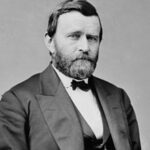The Historic Decision
On March 1, 1872, President Ulysses S. Grant signed the Yellowstone National Park Protection Act into law. This groundbreaking legislation created the world’s first national park. The act designated over 2.2 million acres of pristine wilderness in Wyoming, Montana, and Idaho territories for public use and enjoyment. 📊 Congressional support was overwhelming, with the House passing the bill 115-65 and the Senate approving it without opposition.
Yellowstone National Park’s Unique Features
The newly protected area contained extraordinary geological wonders that captured America’s imagination. Yellowstone’s geysers, hot springs, and dramatic landscapes were unlike anything previously seen. The park’s establishment represented a radical departure from traditional land use policies. Instead of selling or developing the territory, the federal government chose preservation. This decision reflected growing awareness of America’s natural heritage and its intrinsic value.
Legislative Foundation
The act established crucial precedents for federal land management. It designated the area as a “public park or pleasuring-ground for the benefit and enjoyment of the people.” 💰 The legislation prohibited commercial development and resource extraction within park boundaries. This framework would later guide the creation of additional national parks and wildlife refuges across the United States.
Impact:
Conservation Movement Launch
Grant’s signature on the Yellowstone National Park Protection Act sparked America’s modern conservation movement. The decision inspired similar preservation efforts across the continent. Within decades, additional parks protected iconic landscapes like Yosemite and Sequoia. 🌍 The concept spread internationally, with countries worldwide establishing their own national park systems. Australia, Canada, and New Zealand quickly followed America’s example in protecting natural areas.
Economic and Cultural Benefits
The park’s creation generated substantial long-term economic benefits for surrounding communities. Tourism became a major industry, providing jobs and revenue for local businesses. 📊 Modern estimates suggest Yellowstone contributes over $680 million annually to the regional economy. The park also preserved invaluable ecosystems and wildlife habitats. Bison, wolves, and countless other species found protected refuge within its boundaries.
Lasting Environmental Legacy
Yellowstone National Park became a template for environmental protection worldwide. The precedent established federal authority to preserve natural resources for future generations. This principle later enabled the creation of the National Park Service in 1916. The park’s success demonstrated that conservation and public access could coexist harmoniously. Grant’s decision fundamentally changed how Americans viewed their relationship with the natural world, establishing conservation as a national priority.
